
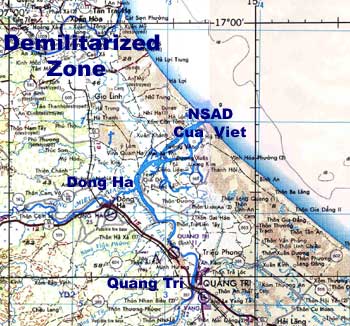
 |
 |
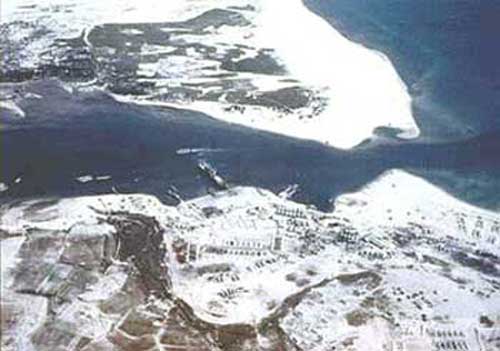 |
Ray Ponthieux, Dale Duffield, Bill Wells, Warren Jenny, Ray Ballew, Tony Ey, Herb Blume Richard Sherley, J.R. Foster, Ron Ownsby, Terry Esler, Roy Pettus, George Wendell, Joe Criscione |
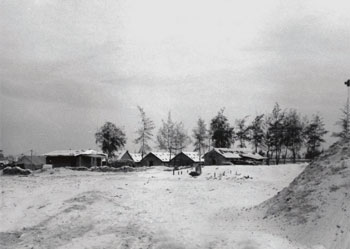
|
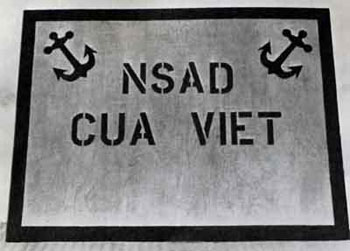
|
| Welcome to the Cua Viet |
 |
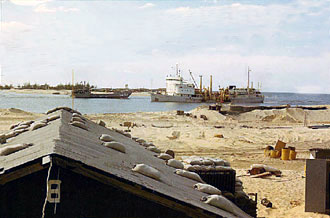 |
| Muddy when it rained. Gritty when it didn't. Sandbags required | Looking out from the base at the mouth of the Cua Viet River |
 |
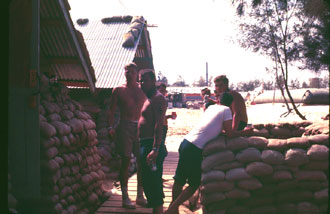 |
| Sand bags, sand and (oh yeah) a little more sand | Tea time outside the hooches. Ltjg Dan Daly on the left |
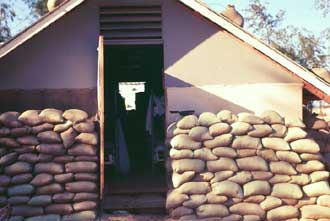 |
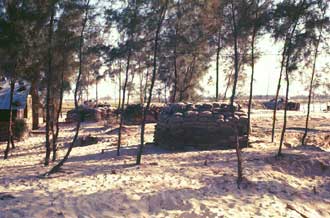 |
| A bungalow cottage with a beachfront view of the sand | A quiet, cozy nook in the forrest suburbs |
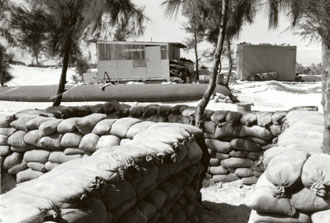 |
 |
| Bunkers were easily accessed out the rear of the hootches |
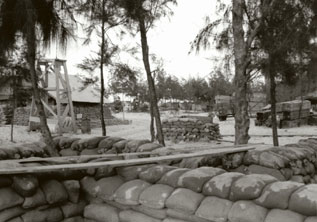 |
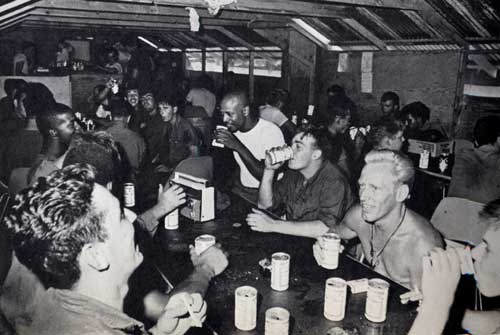 |
| Over the bridge and through the woods to the chow hall | Only 3.2% alcohol, but a relief when the shelling stopped |
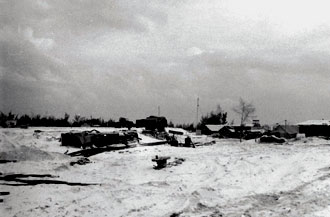 |
 |
| The ammunition dump was separated from the main compound | Other "dumps" were taken closer and protected from shelling |
 |
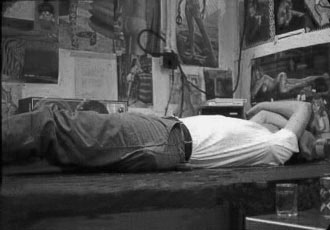
| 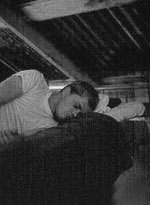 |
| Nice and comfy with a novel | Dreaming of home and what we are fighting for | No gunfire. Time for a nap |
 |
 |
 |
| The US Marine Corps 1st Amphibian Tractor Battalion provided defense against direct assault |
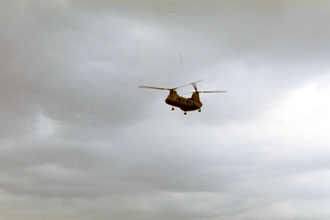 |
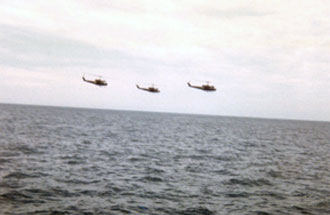 |
| USMC Sea Knight approaches the Amtrac compound | Huey choppers patrol just off the coast |
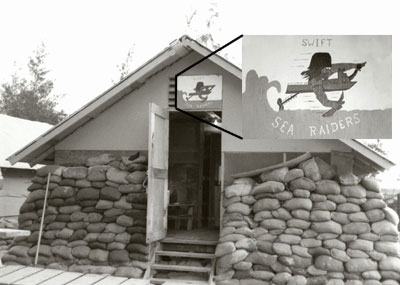
|
 "Yeah ... the weather is just fine to go on patrol" |
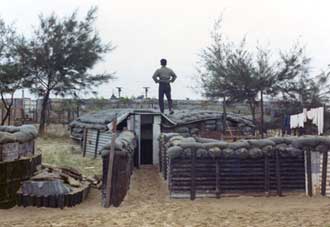 "I think I'll check the surf before trying the river mouth exit" |
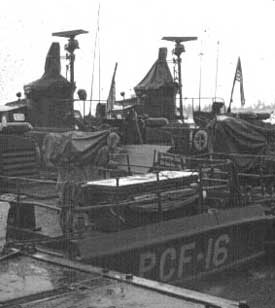
|
 |
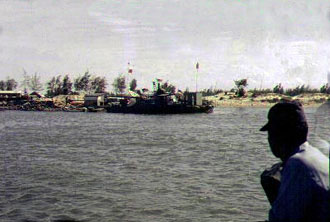 |
| Swift Boats nested at the NSAD Cua Viet pier |
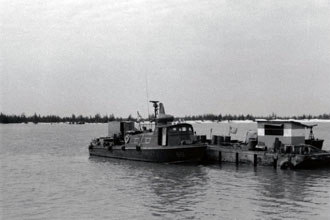 |
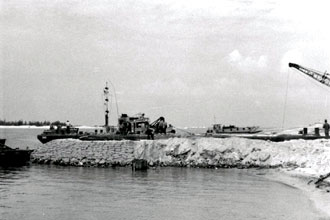 |
| PCF-50 making ready to get underway | Gaggle of boats single up at the jetty |
 |
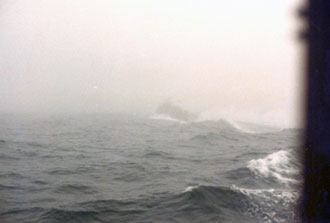 |
| Heading out to DMZ Barrier Patrol Areas | Cua Viet patrol areas were always hampered by the weather |
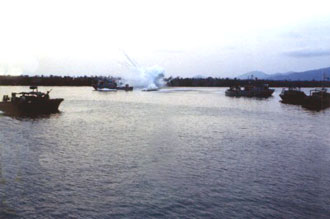 |
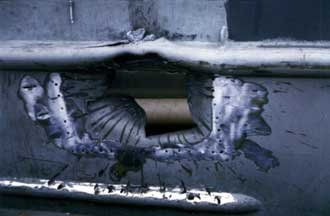 |
| Swifts and PBRs say hello to the North Vietnamese | Unfortunately, they sometimes returned the favor |
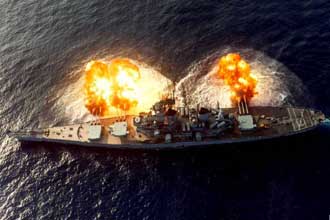 |
 |
|
Some "boats" had bigger guns than the Swifts USS New Jersey (BB-62) conducting NGFS near the DMZ |
The only Mark II Swift Boat assigned to I Corps PCF-139 makes a call to the slightly larger New Jersey |
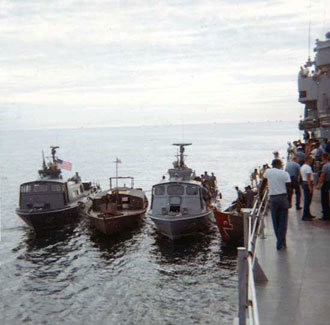 |
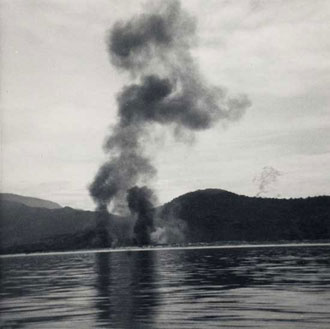 |
| Swifts alongside rocketship USS Carronade (IFS-1) | Swift Forward Air Controller directs airstrike |
Vietnamese Navy Coastal Group Eleven Base
Just a few hundred yards inland from NSAD |
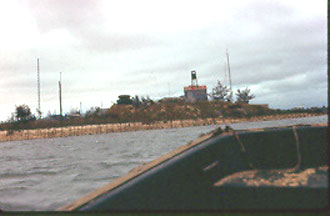 |
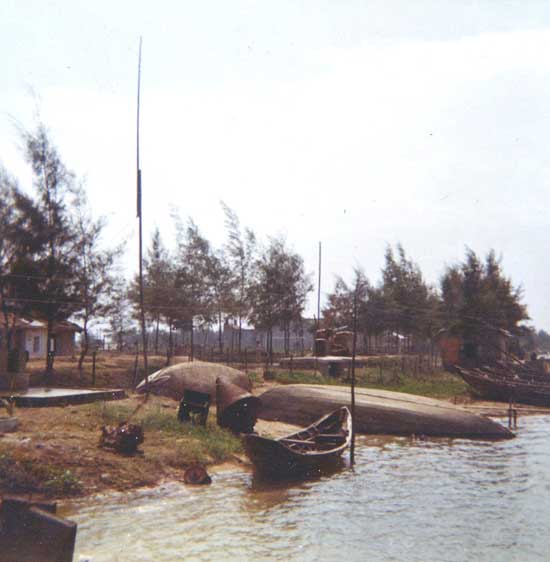 |
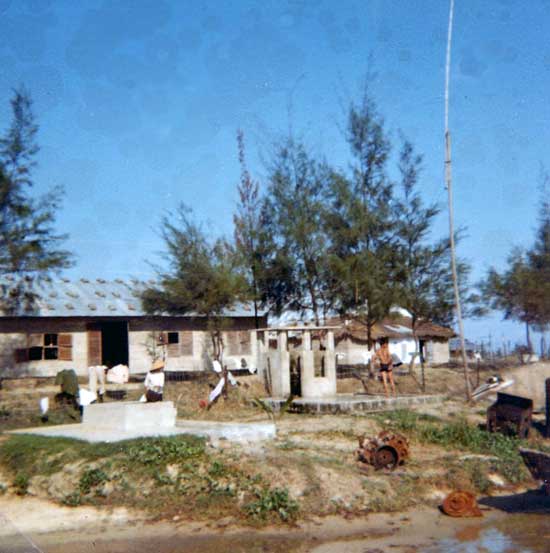 |
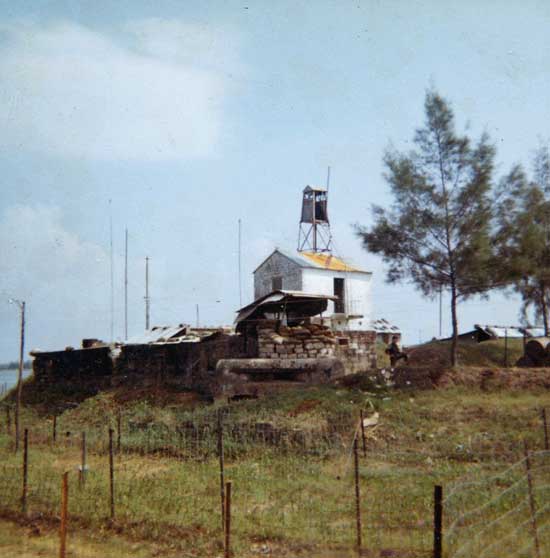 |
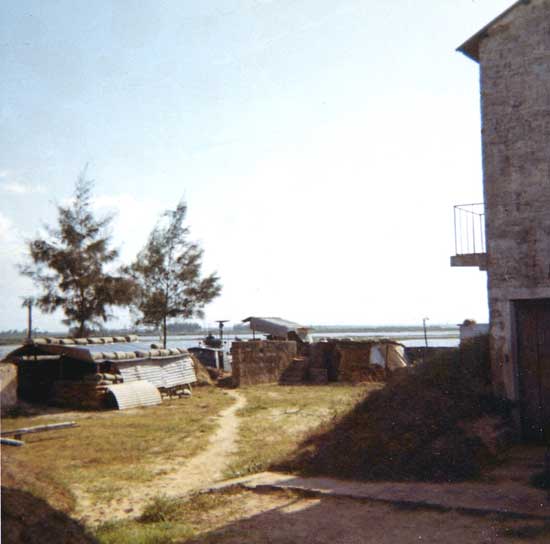 |
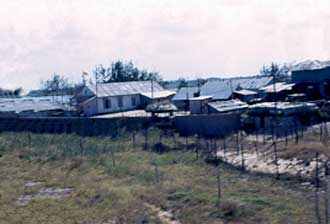 |
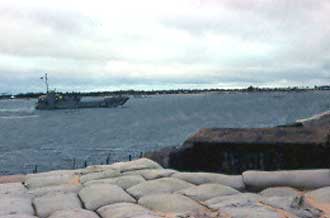 |
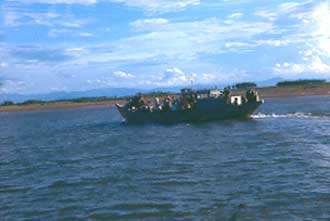 |
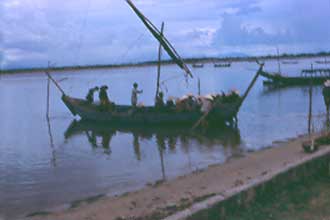 |
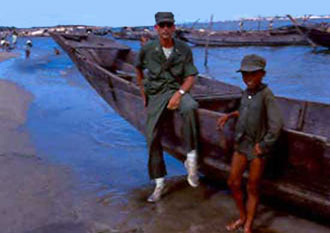 |
| Beans, Bullets and Bravery |
| "I don't know what logistics is. But I need lots of it!" Admiral Ernest J. King, CNO 1942-1945 |
| From the belly of the dragons |
 |
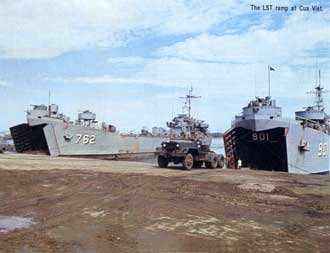 |
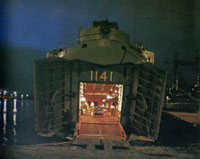 |
| Onto the cargo decks of the workhorses |
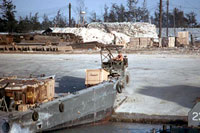 |
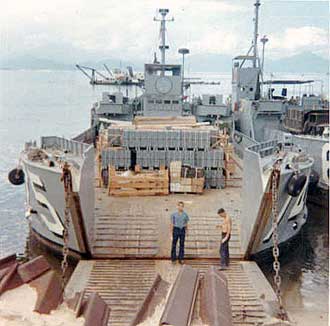 |
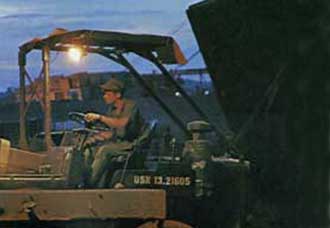 |
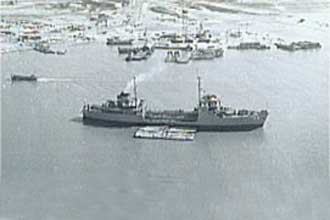 |
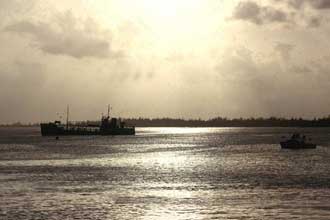 |
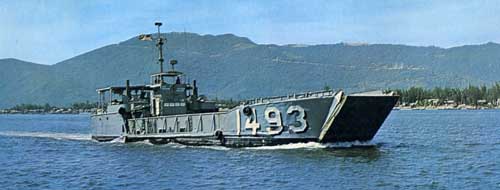 |
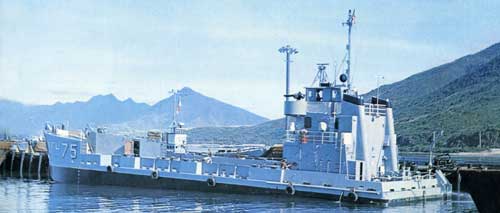 |
 |
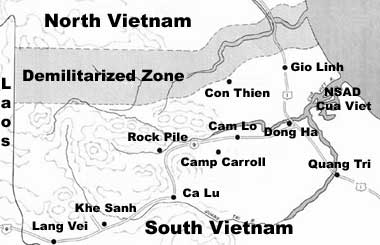 |
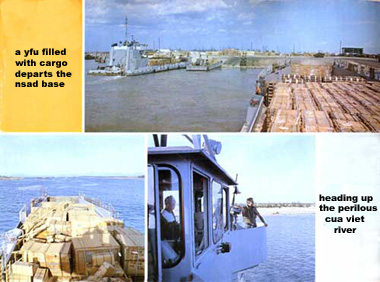 |
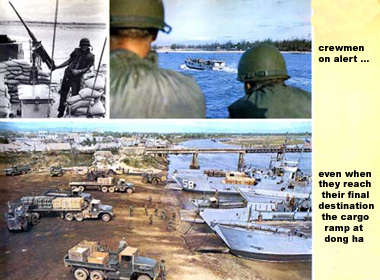 |
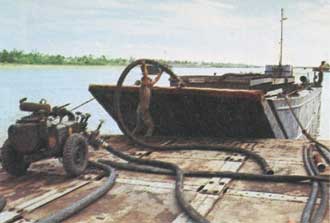 |
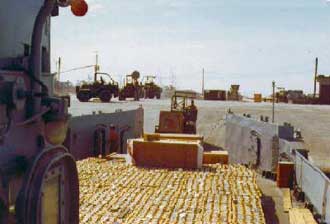 |
| Replinishing fuel bunkers at Dong Ha |
| But sometimes there were difficulties encountered along the way |
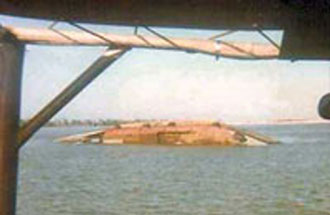 |
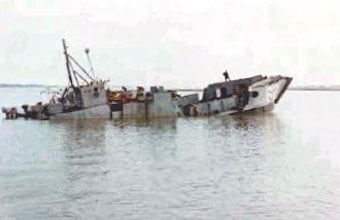 |
At such low points, US sailors Then just carried on. Accomplishing
the important |
 |
|
To Protect and Preserve Task Force Clearwater PBR Escorts: "Hulls of glass. Balls of brass. Nerves of steel"
|
 |
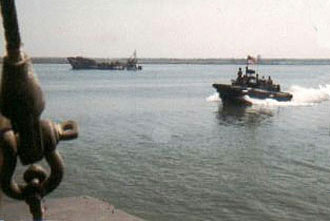 |
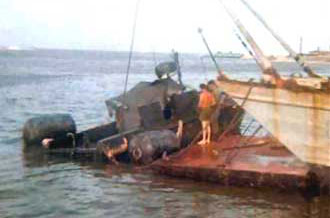 |
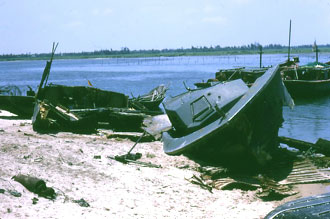 Image courtesy Tony Ey, RAN Clearance Diving Team 3 |
| Friendly Fire Isn't |
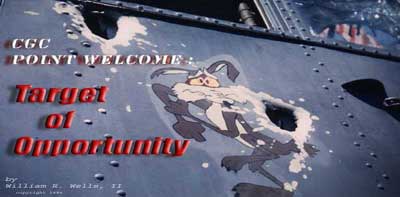 |
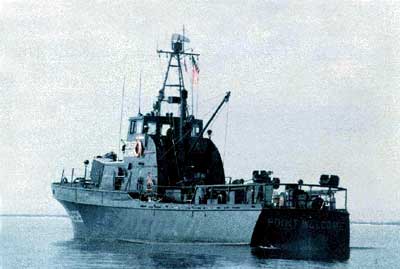 |
| Blue on Blue Tragedy - USCGC Point Welcome 11 August 1966 | ||
 |
 |
 |
 |
 |
 |
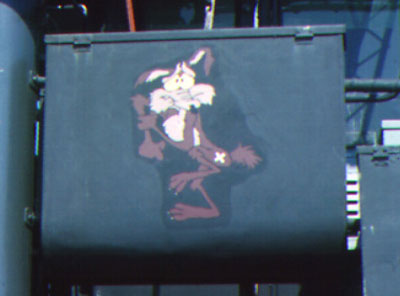 |
For complete information on this tragic incident view Bill Wells' Target of Opportunity |
Richard Lennon, Captain, USMC 1803 (Amtrac Officer), was in Vietnam in 1968 with the 1st Amtrac Battalion located at Camp Kistler at the mouth of the Cua Viet River. Here is his narrative of a trip back to the Cua Viet in 1996:
|
This web site is Copyright � 2002 by Robert B. Shirley. All rights reserved. Click on image to return to the homepage
|